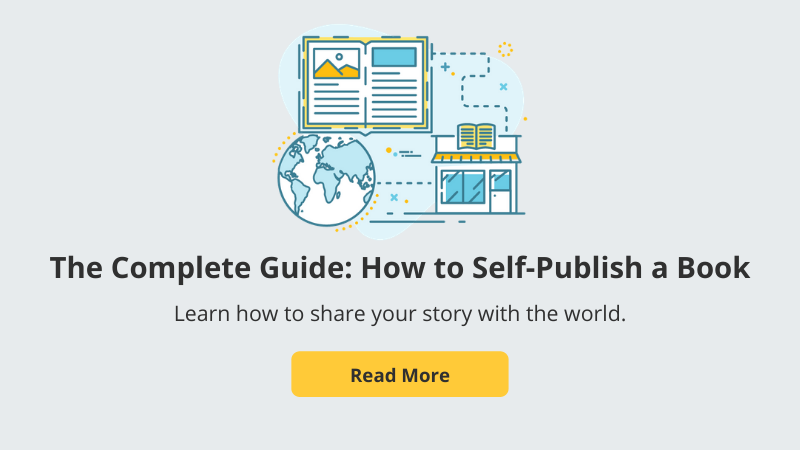Self-Publishing
There are many ways to go about self-publishing — it’s easy and accessible to everyone. That being said, I have read books by self-published authors whose books, for a myriad of reasons, just didn’t seem polished and professional.
Choosing to self-publish through Ingram Spark was a no-brainer for me. It allowed me the creative freedom that I needed to publish a book that was entirely my own creation, but because when you self-publish you don’t have a team behind you doing your book promotion and providing editing services and cover design, all of that work falls onto you, and it has the potential to be daunting and expensive.
Process and Investments
Everyone’s process is different, and there’s no right way to publish a book. This is the process I went through, discovering each step as I went, and the investments that I made along the way.
- Write the book! (Having trouble getting started? You can sign up for IngramSpark's 30-Day Writing Challenge 😉 )
- Research editors for hire that work in my genre and email them a synopsis of my book to see if they seem excited about the material.
- Receive some sample edits and choose the editor who I connect best with—of course keeping their prices and my budget in mind. I found a range of $700 to $4,000 USD to edit my 164-page manuscript. Keep in mind that there are three types of editing services that you can hire: structural edits, copy edits, and proof edits. I decided to skip the proof edit, which now I regret because I ended up with a few typos in my book, but hey—no one’s perfect!
- Send over the manuscript and begin the editing process.
- After the edits are finished and the book is ready for publishing, research interior designers who can format the book for paperback and ebook publishing. I found prices in the $300-$400 USD range for both formats.
- Find a cover designer. I decided to hire a friend who works in graphic design because I wanted to feel completely comfortable guiding her and giving her feedback.
- Upload your book, you’re ready to go!
*Throughout the entire process, it’s a good idea to begin mentioning your project on social media to get a head start on promotion.
Kickstarter
As you can see, self-publishing can be a cheap or rather expensive endeavor, depending on how you approach it. I wanted to publish a book that I would be proud of and I wanted professional support throughout the entire process. In order to fund my project, I decided to run a Kickstarter campaign which, in the end, was what made my book possible.
The Video
The most important element of a Kickstarter campaign is the video. It’s your first opportunity to catch people’s attention and show them that you are professional, passionate, and have a worthwhile project. I contacted a friend of mine who works in audiovisuals and asked him to help me make a professional video in which I could explain my project and—the awkward part—ask for help.
As authors, I think a lot of us prefer to express ourselves quietly in the written word, with time to carefully put our thoughts together and let the page do the talking. Recording the video was a nightmare for me; I was nervous, didn’t know how much “eye contact” to make, and did some weird clicking things with my tongue the whole time, but thanks to the help of a professional I was able to put something decent together. In your video, it’s important to explain your project, make it sound as interesting as possible, convey your excitement about it, and be very clear about what the money will be used for. And of course, be sincere and honest. If your nerves allow it, try to let your personality shine through!
Sharing Your Campaign
This is where having done some posting previously comes in handy; people will recognize your project from hearing about it on your social media and will be more inclined to participate. In my experience with Kickstarter, most of my pledgers ended up being friends and family, or friends of friends/friends of family. It’s a good idea to send out your Kickstarter campaign in an email to anyone on your contacts list who may be interested, making sure that they don’t feel pressured, and suggesting that if they are unable to contribute, they could support you by sharing the link on their social media. It’s also important to share your Kickstarter link on Facebook and Instagram (or whichever social media you use) but without being overbearing. Make sure to share snippets of your creative process in between Kickstarter posts so that people can get a better idea of what you’re up to and don’t feel barraged with your Kickstarter posts—the last thing you want is for people to roll their eyes when your Kickstarter shows up in their feed for the third time in one day.
Rewards
Make sure that your rewards are interesting and feasible. Set time frames that you’re sure you can comply with, and if you reach your goal it’s a good idea to send out updates to your pledgers to let them know how everything is going—and to reassure them that you haven’t forgotten about them!
Thanks to Kickstarter, I was able to edit and publish my book From the Same Quiver. Give it a try, you might be surprised at how many people care about what you’re working on!
Read more about my book and writing process at katevredevoogd.com/blog.
Follow me on Instagram @kateinspain













